Home »
Misc »
How to make good decisions in basketball
How to make good decisions in basketball
How Basketball Players Can Improve Their On-Court Decision-Making Skills
Skip to content
Decision-making is a skill that consists of reaction and the ability to read the situation.
One thing I notice when working with young basketball players (22 years old and younger) is that they tend to rely more on athleticism than the ability to read the defense and react.
Teaching a player how to read the primary defender first is one of the simplest ways to improve decision-making skills. When honing this skill, the less options you give to the player, the faster they should be able to make a decision.
For example, in this video we are working on attacking off the drag. After executing a one-dribble drag to the side, the player has two options:
- If I’m too close to them, drive to the hoop
- If I’m playing off them, shoot the ball
View this post on Instagram
A post shared by Basi Prokofyev (@basi.![]() pro)
pro)
It’s an extremely simple drill, but one that reinforces good decision-making skills for the player. There are plenty of ways you can tweak drills/training to force the player to read and react and train their decision-making abilities.
I like to divide these ways into two categories—non-game situations and game-like situations.
Non-Game Situations help a player hone their decision-making skills and reaction time, but in ways that may not exactly mirror game action. Instead of reading an opponent, the player listens to verbal commands (calling numbers, colors, etc. and having them react accordingly) or responds to non-verbal commands (hand signals, touching a player and instructing them to go as soon as you release the contact). You can see me utilize a variety of hand signals the players must respond to accordingly during these drills:
View this post on Instagram
A post shared by Basi Prokofyev (@basi.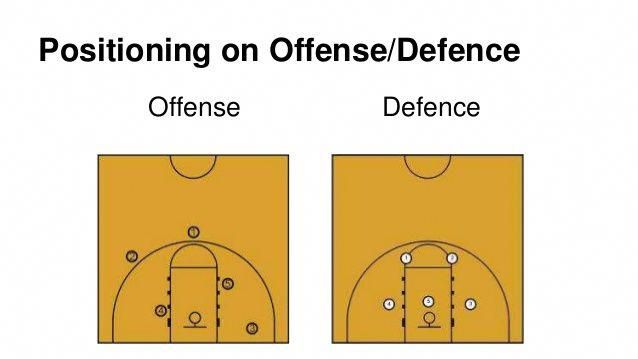 pro)
pro)
Game-like situations are where the player must read the opponent exactly as they would during a game. For example, if the on-ball defender looks lackadaisical, you attack the rim. Or if you see a teammate with the ball cutting toward you, you swoop in to take the handoff. That’s the case in this drill:
View this post on Instagram
A post shared by Basi Prokofyev (@basi.pro)
Non-game situations can improve a player’s reaction time, and I prefer to use them as part of the warm-up or a progression of a particular exercise. Game-like situations are crucial to in-game success, as I believe they’re the most realistic type of training one can receive other than playing in real games against opponents.
Integrating decision-making into a young player’s training can help improve their reaction time and raise their basketball IQ.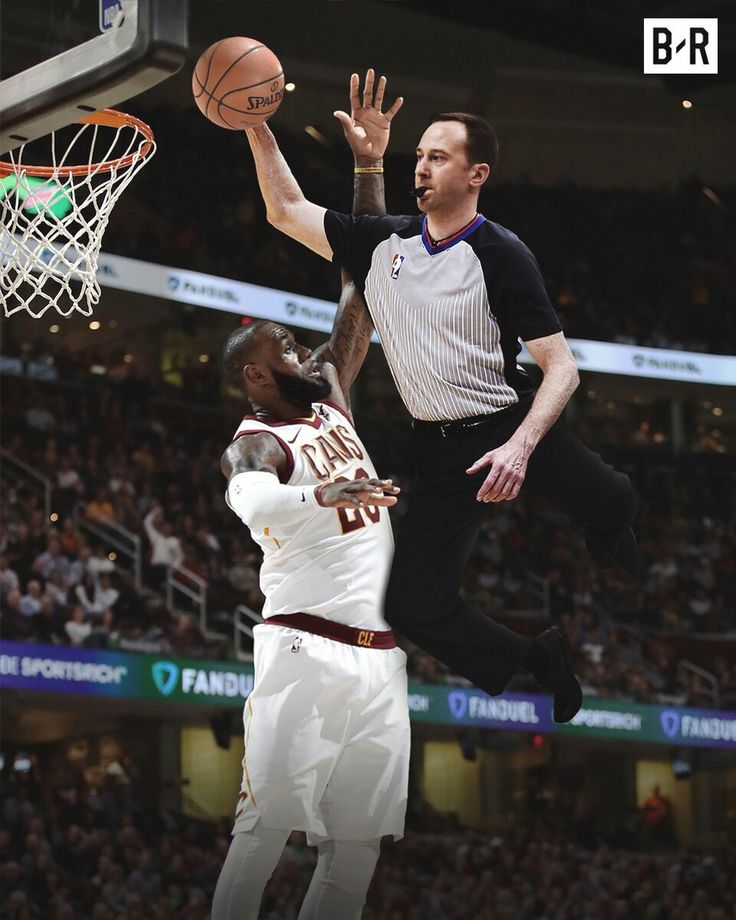 It helps them adapt to the organic nature of a basketball game as opposed to simply running around cones. Adding decision-making to a drill or exercise can be quite simple, but it’s a small tweak that can make a noticeable difference in the player’s performance.
It helps them adapt to the organic nature of a basketball game as opposed to simply running around cones. Adding decision-making to a drill or exercise can be quite simple, but it’s a small tweak that can make a noticeable difference in the player’s performance.
READ MORE:
- How to Be an Effective Basketball Scorer Without Shooting 3-Pointers
- Basketball Fundamentals: Using an Off-Ball Screen
- The Best Two-Ball Dribbling Drills
Share This Story!
MOST POPULAR
Decision-making is a skill that consists of reaction and the ability to read the situation.
One thing I notice when working with young basketball players (22 years old and younger) is that they tend to rely more on athleticism than the ability to read the defense and react.
Teaching a player how to read the primary defender first is one of the simplest ways to improve decision-making skills.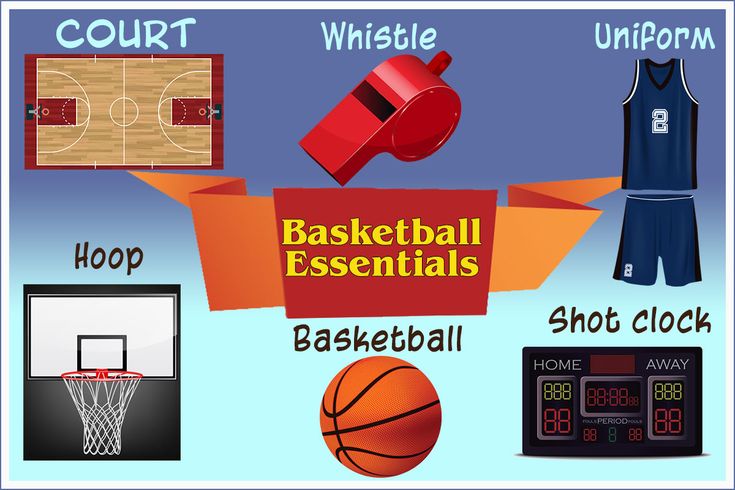 When honing this skill, the less options you give to the player, the faster they should be able to make a decision.
When honing this skill, the less options you give to the player, the faster they should be able to make a decision.
For example, in this video we are working on attacking off the drag. After executing a one-dribble drag to the side, the player has two options:
- If I’m too close to them, drive to the hoop
- If I’m playing off them, shoot the ball
View this post on Instagram
A post shared by Basi Prokofyev (@basi.pro)
It’s an extremely simple drill, but one that reinforces good decision-making skills for the player. There are plenty of ways you can tweak drills/training to force the player to read and react and train their decision-making abilities.
I like to divide these ways into two categories—non-game situations and game-like situations.
Non-Game Situations help a player hone their decision-making skills and reaction time, but in ways that may not exactly mirror game action. Instead of reading an opponent, the player listens to verbal commands (calling numbers, colors, etc. and having them react accordingly) or responds to non-verbal commands (hand signals, touching a player and instructing them to go as soon as you release the contact). You can see me utilize a variety of hand signals the players must respond to accordingly during these drills:
Instead of reading an opponent, the player listens to verbal commands (calling numbers, colors, etc. and having them react accordingly) or responds to non-verbal commands (hand signals, touching a player and instructing them to go as soon as you release the contact). You can see me utilize a variety of hand signals the players must respond to accordingly during these drills:
View this post on Instagram
A post shared by Basi Prokofyev (@basi.pro)
Game-like situations are where the player must read the opponent exactly as they would during a game. For example, if the on-ball defender looks lackadaisical, you attack the rim. Or if you see a teammate with the ball cutting toward you, you swoop in to take the handoff. That’s the case in this drill:
View this post on Instagram
A post shared by Basi Prokofyev (@basi.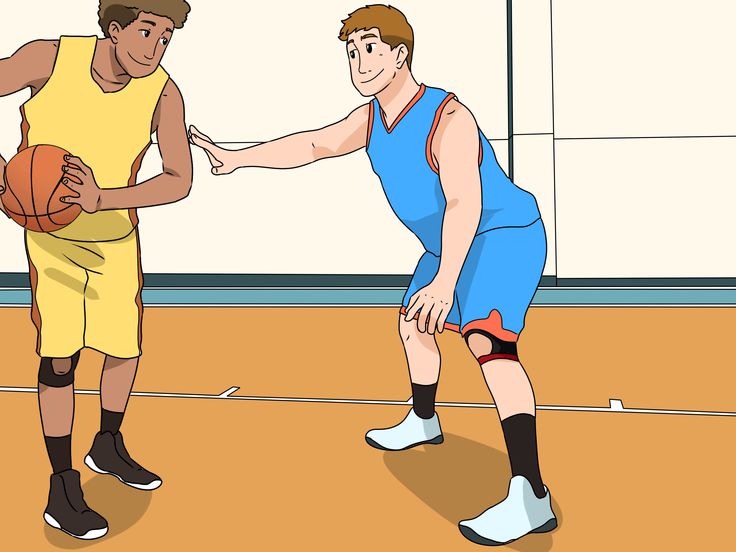 pro)
pro)
Non-game situations can improve a player’s reaction time, and I prefer to use them as part of the warm-up or a progression of a particular exercise. Game-like situations are crucial to in-game success, as I believe they’re the most realistic type of training one can receive other than playing in real games against opponents.
Integrating decision-making into a young player’s training can help improve their reaction time and raise their basketball IQ. It helps them adapt to the organic nature of a basketball game as opposed to simply running around cones. Adding decision-making to a drill or exercise can be quite simple, but it’s a small tweak that can make a noticeable difference in the player’s performance.
READ MORE:
- How to Be an Effective Basketball Scorer Without Shooting 3-Pointers
- Basketball Fundamentals: Using an Off-Ball Screen
- The Best Two-Ball Dribbling Drills
Share This Story!
Page load link
Decision Making in Modern Basketball
The basketball game that is practiced today, is increasingly intense which forces decision making to be faster.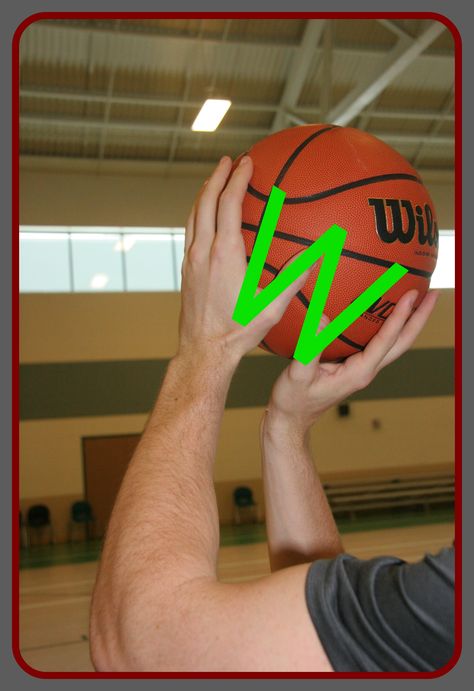
Decision making is the skill in which a player reads an offensive or defensive situation and takes action. For example, the player decides to attack the direct lock, if the defense decides to defend 2x1, the ball player has to make a decision whether to pass or attack.
Unfortunately, the training of young athletes is increasingly focused on pure and hard technique and athletic skills rather than on decision-making.
A player who makes good decisions is always closer to being a good player. The fact of having a good technique allied to a good decision making will make the player very difficult to defend.
Role of the coach in decision making
Less and less during the game, the coach is able to control the decision-making of his athletes. The most that the coach can do during the game is to guide his athletes to make decisions.
During the game, the coach only controls between 5% and 10%, this included time discounts, defensive and offensive strategies and for last substitutions. The remaining 95% to 90% is all controlled by the players and their decision-making.
The remaining 95% to 90% is all controlled by the players and their decision-making.
If the coach is impossible to control the decision-making of the players, the same must turn to practice. Training is the only place where the coach is able to control 90% of the player’s decision making. He can guide and explain the decision to make in a specific situation, but it will only come true if he is trained and trained time and time again.
For example, any player who has the least quality of dribble is able to dribble without the pressure of a defense, however if a defense is placed some players will already have some difficulty. Let’s imagine that now, in addition to the defense ahead, we have the opponent’s pavilion filled with 20 seconds left and the team trailing by 2 points. Will the same player is able to keep the dribble safe through defense pressure and public pressure.
The answer will be depends. It depends on the player’s decision making and their experience.
Training in decision making
It has already been concluded that coaching decision-making is as important or more important than training athletic skills as pure and hard technique.
Decision-making training has in turn forced the player to make decisions, preferably without the coach giving the solution immediately. Guiding the player to decide without giving the answer is no easy task, the coach has an obligation to put the player to think about the decision.
The first time the most certain is that the player will not know how to make the decision, it’s like everything else in life. Certainly the first time you ran a game, you didn’t steer in the best way. Nobody is born taught, and the role of the coach is exactly this, to teach the player to make decisions.
A coach who intervenes little in the game is a sign that everything is going well and that the players are making the right decisions. Which in itself means that the coach did his job and taught his players to make the right decisions.
To train decision making it is essential to put the player real game situations. A player cannot constantly train 5x0 if this never happens in the game. This does not mean that it is wrong to train 5x0, if the goal of the training is to work the offensive organization is very likely to go to 5x0. However it is no use to constantly train 5x0 if in the game we will attack 5x5.
This does not mean that it is wrong to train 5x0, if the goal of the training is to work the offensive organization is very likely to go to 5x0. However it is no use to constantly train 5x0 if in the game we will attack 5x5.
What to do to train decision-making?
Decision making as explained above puts players in real game situations, so it is indispensable to introduce defenses to the exercise. Because during the game we have defenses, if it is one, two or three defenses already depends on what is the goal of the training.
1
st Drill: 11 Fast Break Drill
This exercise is already quite old and much used by coaches. Without a doubt, it is a fairly rich exercise to force players to make decisions, as it places players in a constant situation of numerical superiority, forcing players to decide quickly.
The exercise starts with 3x2 in a backboard after the 3x2 game who wins the rebound attacks 3x2 to the opposite side with that outside. In addition, the exercise continues in this direction.
The exercise starts with 3x2 in a backboard after the 3x2 game who wins the rebound attacks 3x2 to the opposite side with that outside. In addition, the exercise continues in this direction.
Rotation: who was defending occupies the outside columns, who was attacking and did not win the bounce passes to defend
2
nd Drill: 1x1
Another way to force the player to make decisions is to play 1x1, but play 1x1 in various ways. The defender cannot always be stopped in front of the attacker, we have to force the attacker to play with the defender in front of him stopped, next to him, behind him. Only this way the attacker will be able to attack 1x1 anyway.
Drill 2.1: 1x1 with attack advantage
This exercise starts with two to two with a ball, one player attacking and another player defending. The player who is defending will touch the cone and try to contest the throw, in other hand the attacking player will finish on the empty side. This exercise only ends when there is a defensive bounce or converted basket.
In a second phase of the exercise, that is, when players are performing well, we must place limitations on the number of dribbles (Chart 1)
In the second graph the player with ball starts backwards, rotates forwards and the defense makes the decision to choose the cone (only when attacking player rotates forwards). (Chart 2)
A third variant, will be the player with the ball and barely the defense can decide which cone will touch, and the attacker has to quickly change direction or not (depending on which side the defense touches) to go finish.
A fourth variant, will be face to face in the midfield, come slowly (back defense, forward attacker) to the three-point line and the defender chooses a side and attacker, attacks empty side. (Chart 3)
The last variant will extend the cones until the extension of the free-throw line and the intersection with the three points. The defense chooses aside and goes around the cone, attacker attacks the empty side. (Graphic 4)
Drill 2.
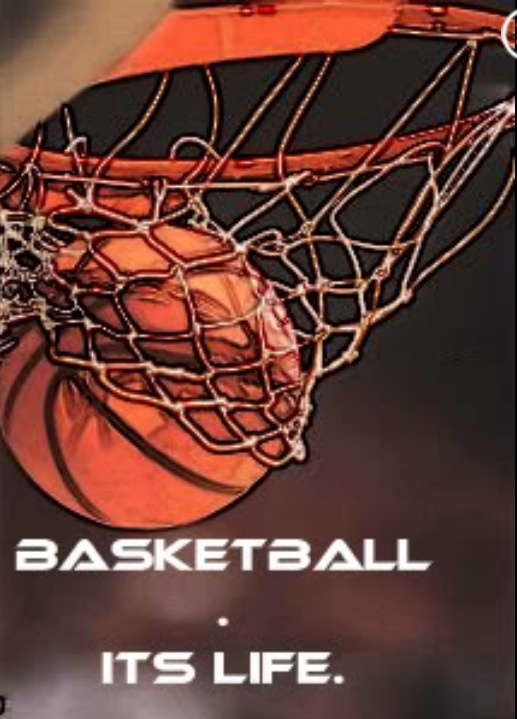
2: 1x1 attack closeout
The objective of the exercise is to improve the decision-making of the attacking player. At first, it’s important to limit what kind of close-out is – long or short. Player attacking, important to check if you attack the most advanced foot or the clearly empty space the defense has left.
The dynamics of the exercise begins with 3 columns two in the corners and one in half. The column of the corner passes to the middle and half passes to the other corner. Whoever made the first pass will defend the other corner.
It is important to change attack positions so that the attacking player is able to attack different spaces on the field.
Drill 2.3: 1x1 in 6 seconds
The exercise begins with 2 columns, in the extension of the key one with ball and another column without ball. Column player with ball, dribbles up to 1 meter from the 3-point line and hands the ball to the player without ball. From the delivery of the 1v1 ball. Attacking player has 6 seconds to finish, there is no limit to dribbling.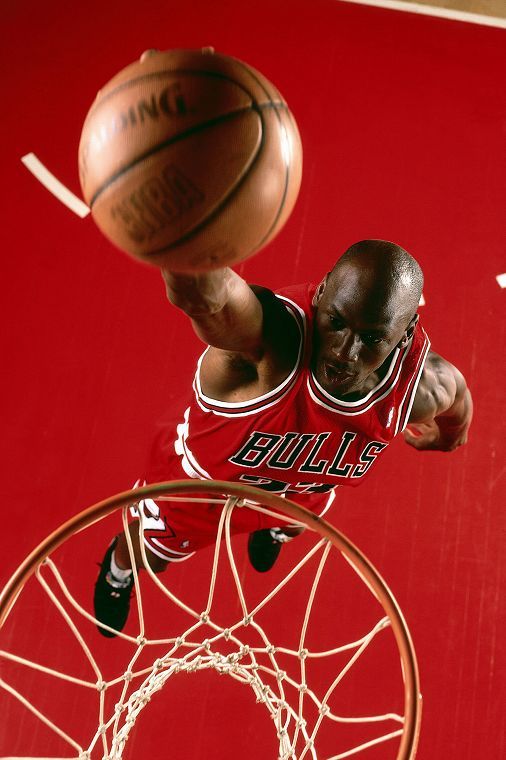
It’s not over until there’s a converted basket or a defense ball. If there is offensive bounce, attack has only 3 seconds to throw and so on.
Variants: Change ball delivery position
3
rd Drill: 2 to 2 Decisive Shoots
A differentiated exercise, authored by Basketball Immersion is the decision-making throwing exercise. It is quite useful for a player to receive and be able to make any decision through the reaction of the colleague.
One player shot and the other one catches the rebound for a minute. After that minute, they switch jobs.
When you return to your initial duties, you switch positions.
3 positions to choose from.
The player passing the ball has to make a gesture and through this gesture, the player who throws has to make the decision.
Show hands – Return the pass
Hands on the bottom- Receive and shot
Close Out with right hand and right leg – Attack the right side of the defense
Close Out with left hand and left leg – Attack the left side of the defense
Jump to the side – A penetrating dribble to that side changes direction and ends from the bottom of the basket
Watch this video on YouTube.
Mindset to put more emphasis on decision making?
Note that training just decision-making is not enough, the athlete to be able to decide has to have tools to be able to do it. What good is a carpenter knowing how to nail a nail if he doesn’t have a hammer.
A player to be able to play a 1x1 making his decisions has to know how to shot, dribble and stop. These are the player’s “hammers”, everything else is their decision.
5 Basketball Exercises to Move the Ball with Passes
There is nothing better than watching a team move the ball quickly and efficiently around the court without greed.
Overcoming the defense with smart passing the ball to each other, creating situations for open shots and passes is one of the great offensive techniques.
Want your team to do it?
Basketball passing exercises in this article will help you with this.
But first let me explain something very important...
There are two types of training exercises:
1.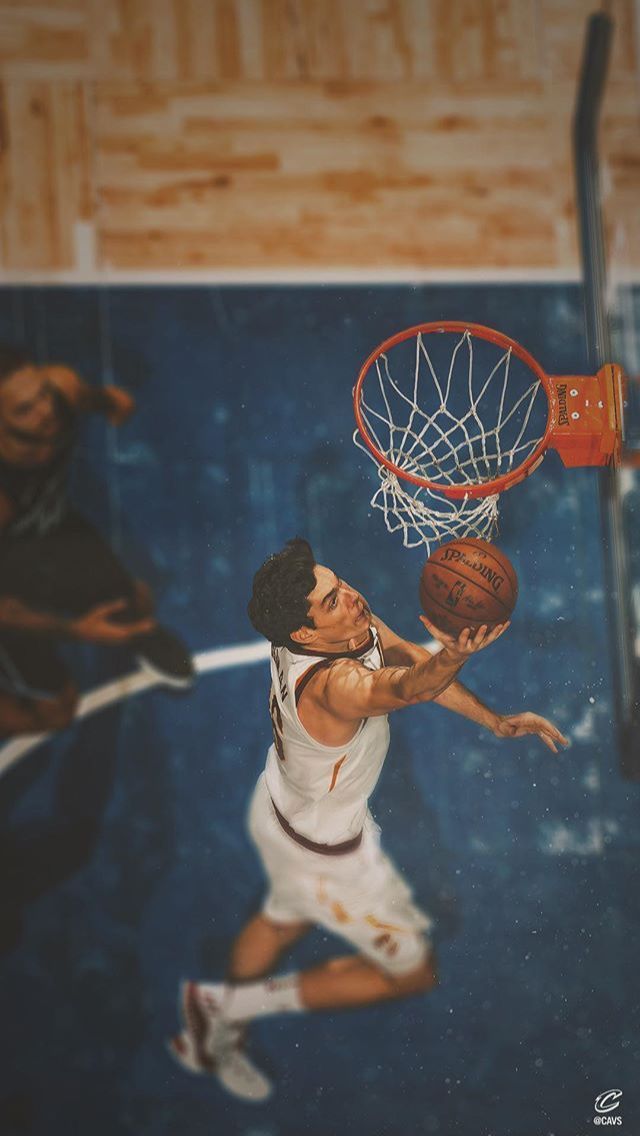 Technique for passing the ball.
Technique for passing the ball.
2. Decision making during transfers.
Unfortunately, most coaches only focus on the "technical" aspect of training and forget how to train their team's decision-making ability when it comes to sharing the ball.
Your players will not improve their game passes by doing thousands of repetitions of chest passes.
While technical drills have their place, they are far less important than passing drills with decision making.
We must let the players learn how to read the defense and make the right decisions.
In addition, ball passing exercises are great for starting a workout to warm up your team and get them to communicate and work together.
5 ball passing exercises.
1. Advance
How the drill works:
Players form 3 columns evenly distributed along the end line. The two outside players start with the balls.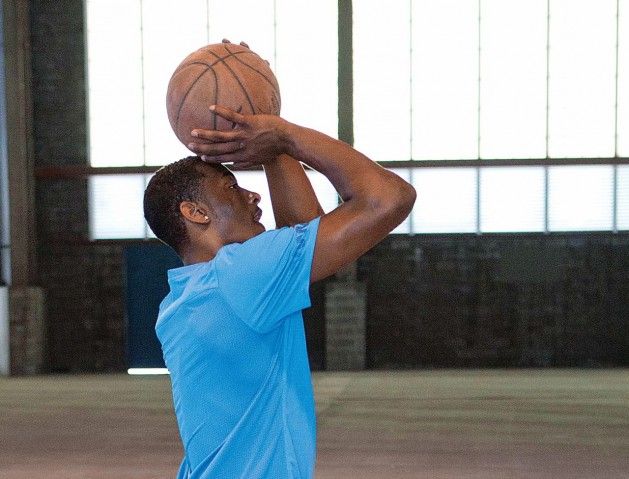
3 players advance across the court passing the ball back and forth to the middle player and then finish the exercise with two shots from under the basket.
Purpose:
A fun passing exercise that works on catching and passing without running, with communication, timing, and shooting from under the basket at game speed.
Formation:
Players form 3 columns behind the end line.
Two players on the outside lines have balls.
Instructions:
3 players (1, 2 and 5) begin to move forward on the court. The 1st outside player passes the ball to the 2nd player in the middle line.
Immediately upon receiving the ball, the center line player returns the ball to the same player on the touchline.
The 1st middle player then turns to the other side and receives a pass from the 5th outside player and immediately returns the ball to him.
Outside players may use 1-2 steps to avoid running.
The drill continues until the players reach the opposite 3-point line. When this happens, the two outside dribblers go to the basket and shoot.
When this happens, the two outside dribblers go to the basket and shoot.
The group then waits at the opposite end for the rest of the groups to complete the exercise before starting the exercise on the other side. On the right scheme at the top, the three players (4, 3 and 2) continue the exercise according to the scheme described above.
Options:
Medium or 3-point shots. Instead of ending with a run to the basket, players may end with mid-range shots or 3-point shots.
Back and forth - Instead of waiting at the other end, the troika can complete the drill both ways. Only now the threes are placed on both end lines and begin the exercise when the three from the opposite side return to their half of the court.
One Ball - If you are coaching very young players, you can run this exercise with one ball until the players understand how it works.
Coach's notes:
Passes must be passed on the move in front of the player using proper passing technique.
The receiver must hold his hands at goodie level, showing 10 fingers and calling for the ball to be passed to him.
The middle player must catch the ball and quickly pass the ball to a running partner. Don't run!
Shooting technique while moving from under the basket is very important in this exercise. Watch your footwork and make sure all players are doing it right.
2. Monkey in the middle
How the exercise works:
Players are divided into groups of three. Each group has one ball. The two transmitters lined up 12 to 15 feet apart. The third player in the group is the "monkey in the middle". He tries to hit or steal the ball. The two outside players must pass the ball to each other without using cross passes or dribbling. Simply turning and using feints to open up the passing line and pass the ball past the defender.
Goal:
A fun exercise that works on defense at the same time. This exercise will teach players how to use feints and turns to create a passing zone and also to protect the ball.
This exercise will teach players how to use feints and turns to create a passing zone and also to protect the ball.
Lineup:
• Groups of 3 players.
• Each group has one ball.
• The passers are lined up 12-15 feet apart with the third player (back) in the middle.
Instructions:
1. The drill starts with the defender attacking the player who starts the drill with the ball.
2. The attacker uses feints and steps to pass to another attacker while the defender attempts to parry or intercept the pass.
3. After each pass, the defender rushes towards the ball carrier and tries to press the ball again.
4. When the defender recovers the ball or kicks the ball, the players change positions.
Variations:
Change after a certain time - Players can change positions
after a certain period of time (depending on the age of the players, their strength and stamina), and not after each interception and elimination. For example, 30-40 seconds.
For example, 30-40 seconds.
One dribbling available. Let the attacking players hit the ball once to the floor to open up the passing corner. It will be tougher for the defender.
Only bounce passes allowed - in order to make it more difficult for attackers, allow them to only bounce passes.
Notes:
• It is very important for a defender to have active arms and legs at all times. This is the best way to intercept.
• Passing players must wait for the defender to recover before making the next pass. The purpose of the training is to learn how to pass and create passing angles.
• If there is no set time, the offensive player must not hold the ball for more than 5 seconds without passing the ball.
• No passing in an arc! They make the drill too easy for the attackers and will not lead to improvement.
3. Swing passes
How the exercise works:
The team is divided into 4 groups in the corners on half the court.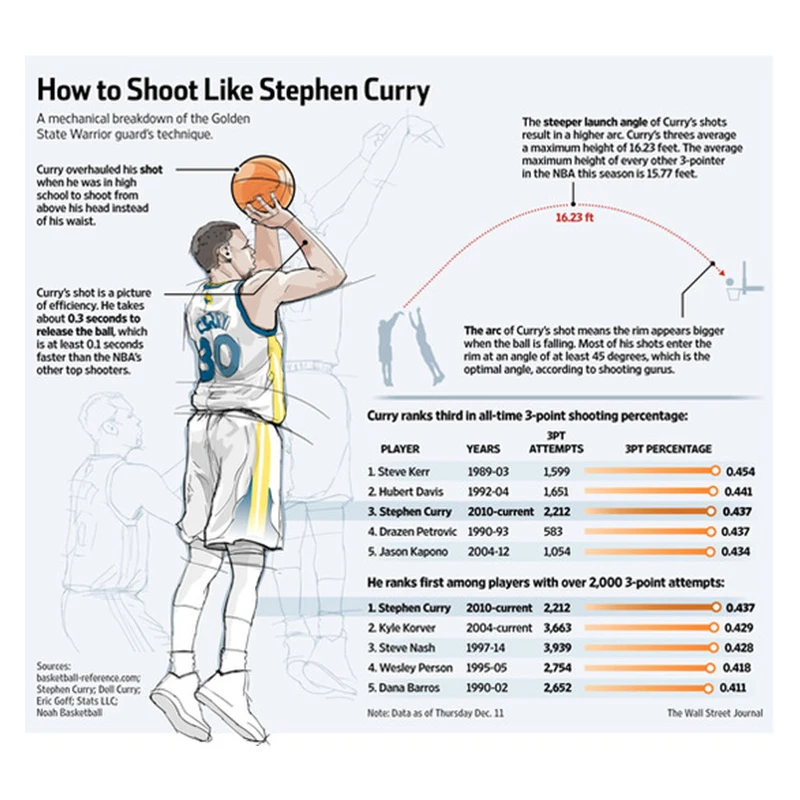 The players make a pass to the player on the right, who start running along the sideline towards the endline. The sender then joins the end of the column into which he passed the ball.
The players make a pass to the player on the right, who start running along the sideline towards the endline. The sender then joins the end of the column into which he passed the ball.
Purpose:
A drill intended to be used primarily with young players or as a warm-up. This training will improve passing the ball on the move, as well as improve reception and passing without dribbling.
Lineup:
• The team is divided into 4 groups. One group located in each corner.
• The first player in one of the groups has the ball.
Instructions:
1. The drill is started by ball carrier 02 passing the ball 01 to the player on the right.
2. Before passing the ball, the receiver must start running in the direction of the next group, where he will make the next pass of the ball.
3. 01, having received the ball, passes it to player 05, who starts a dash towards 03.
4. After each pass, the passer joins the end of the group where the ball was passed.
5. The exercise continues according to the same scheme with passes and jerks of the players along the square in the same direction.
6. After a certain period of time, the coach changes the direction of the passes.
Options:
Turn on the second ball. If the players perform confidently, then you can enter the second ball in the opposite corner.
Various types of passes - The drill can be performed with one or two hand passes, bouncing, etc. One Dribbling - Players are allowed to make one dribbling before passing to the next player. This can be useful if you are passing with one hand.
TIPS:
• The receiver does not need to slow down or speed up to catch a transmission. Transfers must be accurate, timely and forward.
• The receiver must initiate the snatch in a timely manner with arms outstretched to assist the passing player in making a timely and accurate pass.
• It is very important that you do not make any mistakes during the exercise.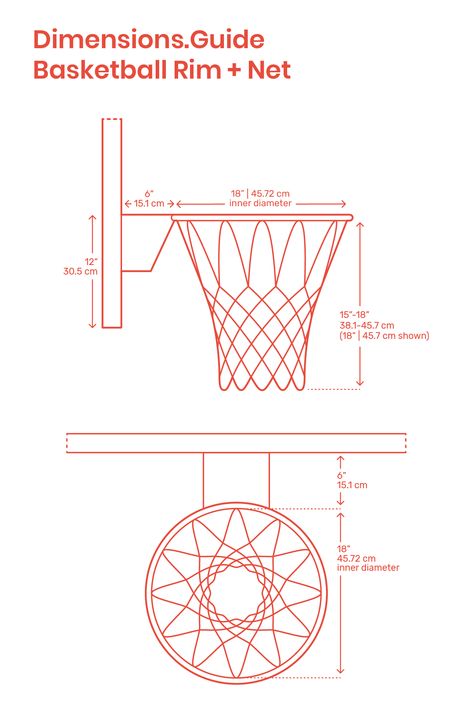 Don't let them fall into this bad habit.
Don't let them fall into this bad habit.
• Begin the exercise at medium speed at the beginning until the players understand it. Then increase the intensity.
4. Bronze gears.
How the drill works:
Starting at the end line at the edge of the penalty area, pairs of players pass the ball back and forth using different passes as they run across the court to the other end line. When they get there, they move closer to the touchline and come back using various passes over the players in the middle of the court.
Purpose:
An excellent warm-up that provides many passes in a short amount of time. Including passes of various lengths and types for players in training.
Line-up:
• All players find a partner.
• Each pair has one ball.
• Pairs split into two columns behind the endline at the edge of the SR.
Instructions:
• 1.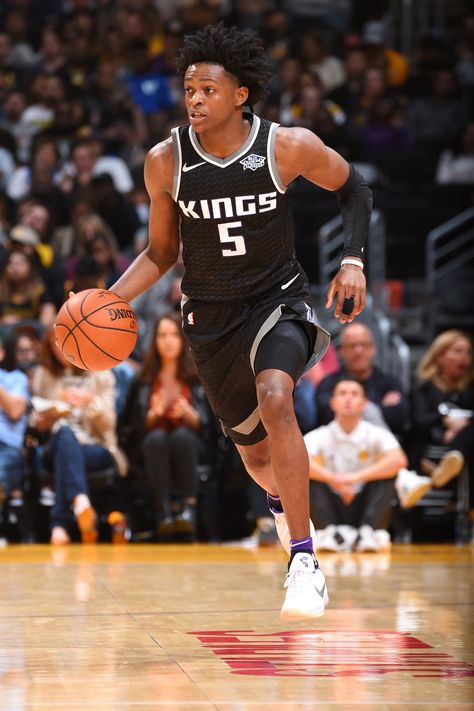 The first pair move to the opposite side at a slow pace in the middle of the court, passing the ball from the chest to each other.
The first pair move to the opposite side at a slow pace in the middle of the court, passing the ball from the chest to each other.
• 2. As soon as the first pair is closer to the 3-point line, the next pair starts.
• 3. When the first pair of players reach the opposing endline, they move to the touchlines and return, passing the ball over the pairs of players moving in the middle of the court.
• 4. When the players return to their starting position, they rejoin the pairs in the middle of the court and continue continuous training.
• 5. Every couple of minutes, change the type of passes players make for middle pairs and outside pairs.
Options:
Gears for pairs in the middle. For the mid lanes, there are several types of passes that I recommend: from the chest, with a rebound, one-handed from the chest, and one-handed with a rebound.
Outline Passes - For outside lines there are several types of passes that I recommend: chest passes, overhead passes, one hand passes.
Remember to consider your team's age, strength and skill level when deciding which passes they should use during practice.
Tips:
• Follow the pace of the exercise; especially if it is used as one of the warm-up exercises. Walking should not be allowed, but too much traffic should also be avoided. Accurate transmission is the main focus of training.
• Players on the outside lines must not make too many passes in an arc and with a very high trajectory on their passes. They should be at a height that is safe enough not to hit the midlines, but straight enough to reach your partner quickly.
• The ability to pass the ball with either hand is an important skill to develop. Expect mistakes when your players first perform a drill, but make sure you train them properly.
• Footwork is very important during this workout. Players must be able to catch the ball and pass back to their partner in two steps. If you are training young children and they cannot pass the ball at speed yet, slow down the pace of the exercise.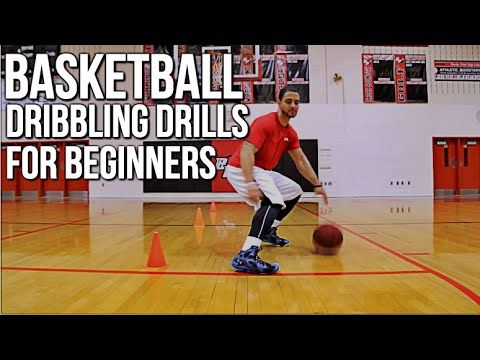
• After each run around the court, the players must switch to the sides so that they practice passing short and long passes from both sides of their body.
5. Netball
How the exercise works:
regular battle without dribbting the ball is allowed at any time. Games can be played 3 on 3, 4 on 4, or 5 on 5.
Target:
An excellent exercise that improves not only passing the ball, but also moving without the ball, positioning, jerking, etc. This exercise will lead to less use of dribbling in games and fewer losses.
Lineup:
• Divide the players into two teams based on the number of players available for training.
• Try to make teams of the same height and skill level.
• Only one ball is needed for training.
Instructions:
1. Teams play normal full game - no dribbling!
2. The exercise is performed within the time specified by the trainer.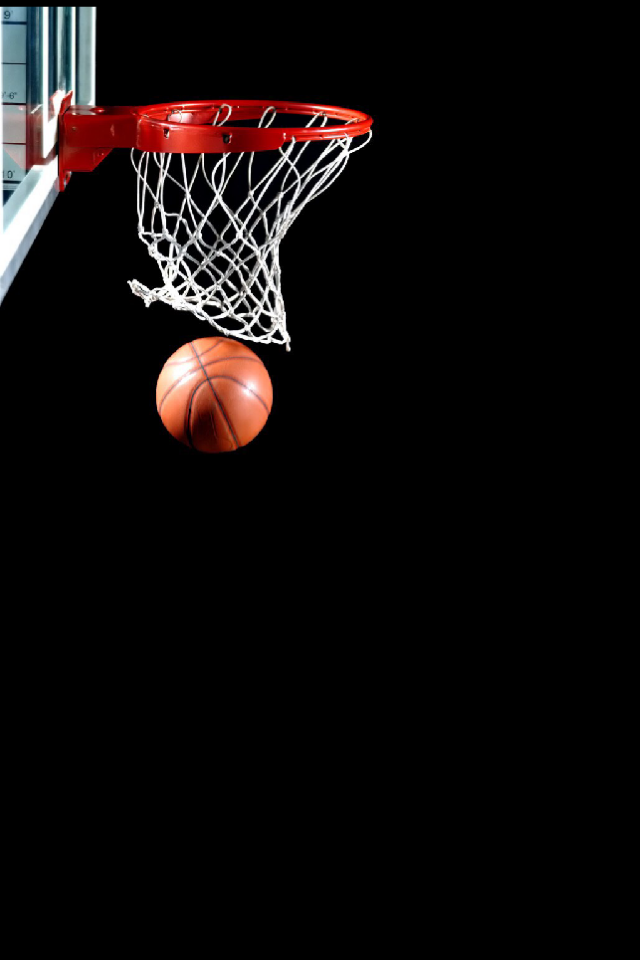
3. Start with the arrangement shown in the diagram.
Point system:
• The game is played up to either 5 or 11 points.
• Each 2-point roll is worth 1 point.
• Each 3-point roll is worth 2 points.
• Must win by 2 points.
• In the event of a shooting foul, the offensive player throws one free throw for 1 point.
Variations:
One Shot Allowed - Players are allowed 1 dribbling when they gain possession of the ball. This is not a requirement, just an option.
Only bounce passes allowed - Restrict your players to only use bounce passes.
3 teams. The exercise starts by dividing your team into 3 groups of 3 to 5 players. Two teams start defense in each half. The third team is in the middle of the court on offense. The offensive team chooses one side and tries to score the ball without dribbling. Same scoring system as above. After a goal is scored or the possession of the ball is changed, the defensive team receives the ball, attacks in the opposite direction. The previous offensive team may play defense up to the center line of the court. Play until one team reaches 5 or 11 points.
The previous offensive team may play defense up to the center line of the court. Play until one team reaches 5 or 11 points.
Tips:
• It's very important to give players instructions on how to set up wide and run smart to get the ball.
• If you need to step in to make adjustments or re-emphasize the most important points of the exercise (distance, snatches), step in but keep it short.
• All passes must be at least 3 feet long. Don't let the players run up and pass the ball from each other's hands.
• Footwork is important in this exercise. Make sure the players are not running and that they are using turns correctly.
• Players must speak and use raised arms when rushing to the basket to receive the ball.
V. Melnichuk translated 07/23/2018
“My medals are at home in a black bag.” Interview of Russian basketball team coach Sergei Bykov by children
Neither athletes nor journalists usually like press conferences: questions and answers to them are often known in advance.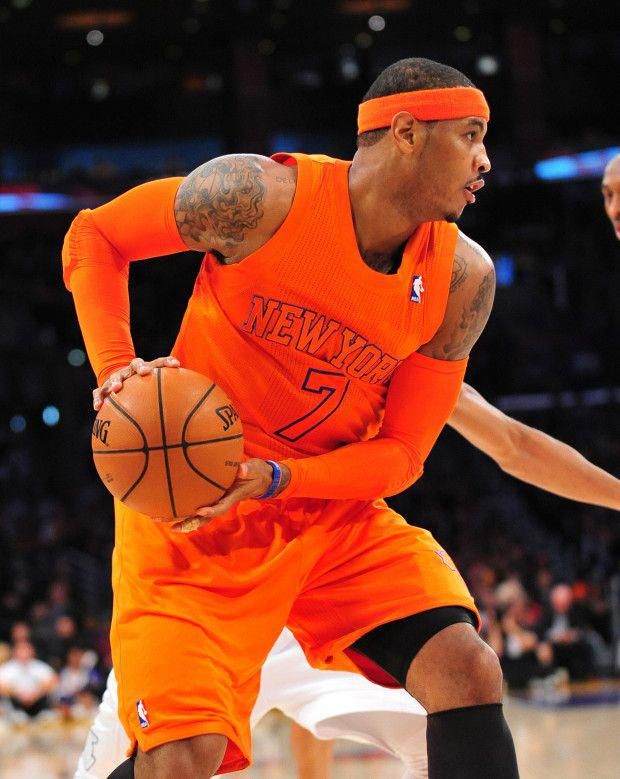 Sports.ru and the company SIBUR, together with which we made this material, decided to try to change this.
Sports.ru and the company SIBUR, together with which we made this material, decided to try to change this.
Sports.ru media director Alexander Polivanov went to the company's health camp in Anapa, where the children of SIBUR employees have a free vacation and prepared everyone for a press conference with the former captain and current coach of the Russian national basketball team Sergey Bykov.
We will tell about how the preparation went in the following materials, but for now - the results of the press conference. Questions were asked by schoolchildren aged 9-12, who studied in the media center of the camp. It was organized so that in the age of social networks, when almost everyone has their own blog, children will learn the basics of working with the audience; the task of the media center is to involve them in the coverage of events and show the work with the speakers. Sports.ru helped the children formulate some questions and talked about who Sergei Bykov was and how such press conferences are held.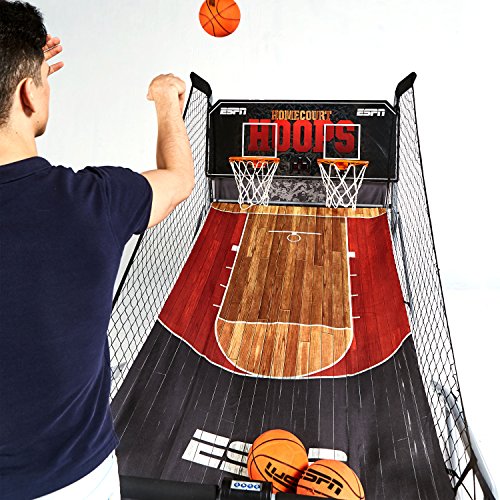
Why Bykov? For several years now, SIBUR has been implementing the School of Basketball program, which helps children and children's coaches in the cities where the company operates to reach a new level in the game. Since January 2019, Sergey Bykov has become an ambassador and leader of the company's basketball development program.
- What kind of relationship did you have with your first coach?
– Probably the same as you have with all adult teachers. An adult, great respect, you listen to every word. At first, you take criticism hard, then you accept comments, because you realize that the advice was correct - and you absorb more and more. Then, when I already grew up, grew up to the national team, we became friends. For the 12th year we have been holding a tournament for my prizes for children in Novodvinsk.
– Was it difficult to move from a small town to a big one, and did your parents support this move?
- Great question. I really am from a small town - from Novodvinsk, Arkhangelsk region. There was no basketball section, only "extracurricular activities", so in order to develop further, it was necessary to move.
There was no basketball section, only "extracurricular activities", so in order to develop further, it was necessary to move.
My parents have always supported me in all my undertakings. Naturally, they understood that when I was invited to Moscow, I had to follow my dream. On the other hand, they were sorry to part with the "youngest".
I was very fond of basketball, at that time I got into the youth team of Russia and went to Moscow with great pleasure. Now I understand that it was a defining moment in my life. I still have a good connection with my homeland: my mother, many friends, brothers are there, but then I went on a big trip, which allowed me to meet a lot of interesting people, both Russians and foreigners.
- Were there times when you wanted to quit basketball?
– Of course, there were doubts, but they lasted not even for days, but for hours. When you love something a lot - well, let's say a friend - you may be dissatisfied with him, but this does not mean that you have stopped loving him. I had doubts - I did not finish sports school and therefore did not get the basics of basketball, and faced difficulties in confronting more talented guys, but the Pomeranian character did not allow me to give up everything halfway. And I loved basketball so much that there were no thoughts of quitting it seriously.
I had doubts - I did not finish sports school and therefore did not get the basics of basketball, and faced difficulties in confronting more talented guys, but the Pomeranian character did not allow me to give up everything halfway. And I loved basketball so much that there were no thoughts of quitting it seriously.
– Are you recognized on the street? What do you think about it?
– Basketball is a sport not spoiled by glory, we are not recognized on the street as often as football players. But once there was such a curious moment: I met in a restaurant with your colleague, a journalist. And he asks me exactly the same question, to which I answer him that even Olympic champions are not recognized in Moscow. The interview is over, we go down the stairs, a man comes towards us and says: “Oh, Sergey Bykov! I support Dynamo, thank you.” Curious moment.
When they find out, I'm pleased. And it’s not that it’s about vanity - it’s more like a confirmation that in your field it was possible to achieve certain results.
- Do you follow women's basketball?
– Of course, I do. Women's basketball is called a “smart game”: when there are no great physical abilities, like men have, you have to take on other skills, so the technique develops, some tricky tricks are used. In men's basketball, elite athletes also play according to the principle of athletic ability + head, but in most cases the guys are trying to use their physical abilities - and this does not always look like intellectual basketball.
– You have visited many cities. In which city do you like and would like to live the most? Do you often visit your hometown?
– Yes, I have visited many cities and many countries. Despite the fact that I was born in the North, I fell in love with Moscow very much and can rightly call it my most beloved city. I arrived in the capital at the age of 15 and have been living in it for 20 years, more than in my homeland. My children were born here. So when I went somewhere with the team, I rather thought about when I would return.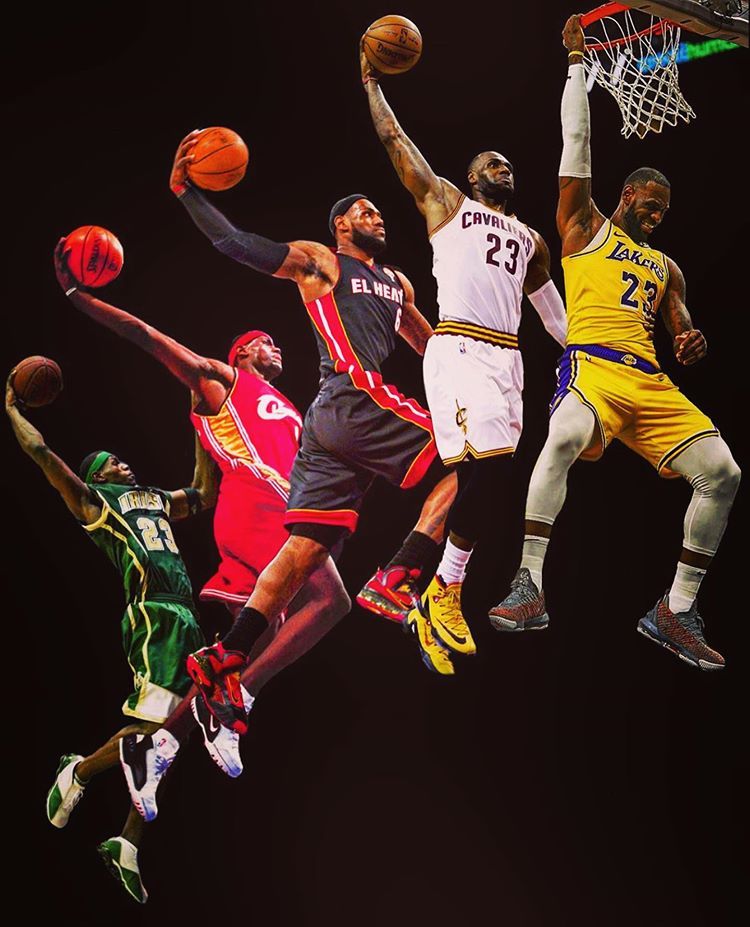
Speaking of foreign cities, such places as Los Angeles, Paris, Madrid cannot leave you indifferent. It has its own aura, energy, architecture and culture.
And if I answer the question about my native city, then at least once a year I try to come to the tournament, and my friends and parents come to Moscow sooner.
- You used to play in the national team, but now you are a coach. How do your friends feel about the fact that you are now coaching them?
- This is an adult and good question. The transition from player to coach is a very delicate moment. I will say this: 80 percent of the players supported me, the rest painfully perceived that I now sometimes make comments to them from the coaching bridge. They did not understand that when I criticize their actions, I do not criticize them, that I do it so that we can be better as a team and beat stronger teams.
- Do you want your children to play basketball and compete?
– My son is 14 years old, my daughter is eight. My daughter has already changed her mind about playing basketball, she went into dancing, into todes. The son is still doing it. Children go to a good school with an emphasis on mathematics, go to a theater group, and receive a versatile education. I want my children to be first of all interesting people.
My daughter has already changed her mind about playing basketball, she went into dancing, into todes. The son is still doing it. Children go to a good school with an emphasis on mathematics, go to a theater group, and receive a versatile education. I want my children to be first of all interesting people.
– How old do you have to be to play basketball?
- There are standards according to which you can practice playing sports from the first grade. But exercise can be done earlier.
But there are instructive examples when people who started playing basketball only at the age of 17 became Olympic champions, and before that they worked at a factory, at a machine tool. You probably know who I'm talking about if you've seen the movie Moving Up. Remember there is a character who suffered with vision all the time, Alzhan Zharmukhamedov?
– What does victory mean to you?
- This is a philosophical question. Everywhere - in films, in books - they say that when you stand on a pedestal, this is the best feeling.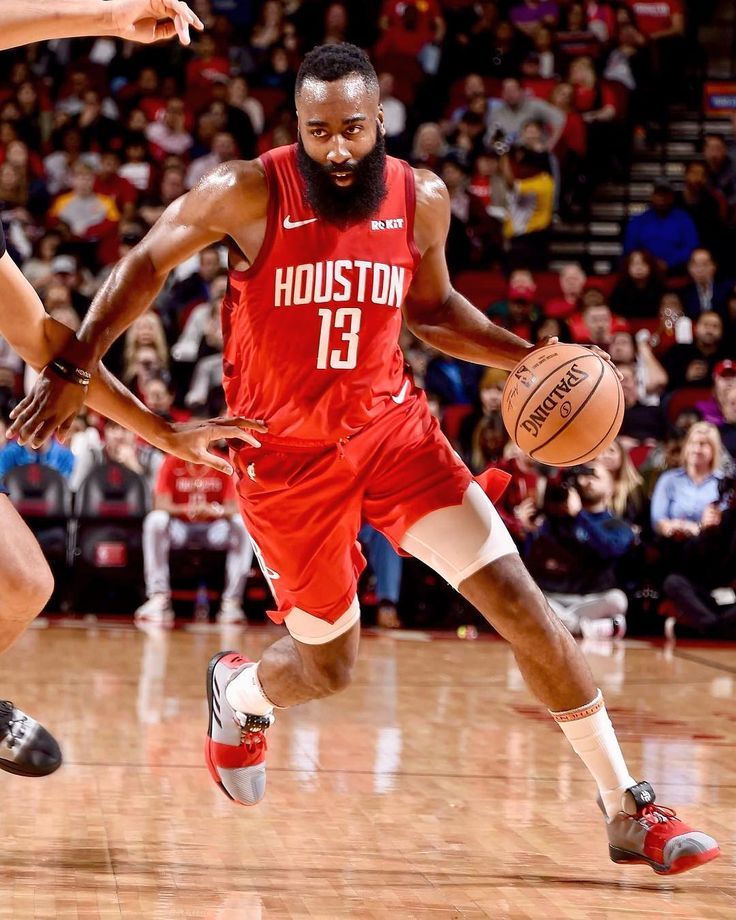 I often stood on a pedestal, and did not understand where is the euphoria? Then I realized that the path to victory itself is much more interesting when, after a victory, you look back and remember what was overcome.
I often stood on a pedestal, and did not understand where is the euphoria? Then I realized that the path to victory itself is much more interesting when, after a victory, you look back and remember what was overcome.
Before the 2007 European Championships, when we took gold, I didn't make it into the squad. Some midge bit me so hard that I had a temperature of 40 - and I was treated with antibiotics for more than a month, I was in terrible shape. The coach first kicked me out of the national team, then gave me a second chance - and I jumped into the last car.
I have medals, but they are not hung on the walls, they are in a black bag. For me, this is a kind of symbol that one should not live in the past, but should think about the future.
- Who do you like to coach, children or professional athletes?
– For me, coaching children and professionals are two different professions. When you train children, you are more of a teacher, you need to make children better. When you train adults, you become more of a manager-psychologist. It is difficult to manage adult uncles, including naughty ones, for whom various pedagogical methods do not work. Sometimes you need to talk like a man, and come up with some tricky punishments. A kind word often helps, uniting around a common goal.
When you train adults, you become more of a manager-psychologist. It is difficult to manage adult uncles, including naughty ones, for whom various pedagogical methods do not work. Sometimes you need to talk like a man, and come up with some tricky punishments. A kind word often helps, uniting around a common goal.
These are two different professions, but you get pleasure from both. When I work with children, I get very tired, because in most cases, children, especially modern ones, cannot keep focus for a long period, I have to repeat it many times. But at the same time, you are charging: you are now like sponges, absorbing all knowledge, and when you see that your phrase, your action, your advice, hint are working, it is a great pleasure.
- Have you become a coach, do you have more free time?
– I do not agree with the wording – in fact, coaches have no free time at all. Let me tell you the EuroBasket schedule for basketball players and coaches.
Basketball players: sleep until 9 am, breakfast until 10 am, then morning training (not always), meeting, video, lunch, quiet time, evening game, rest, athletes get massage, restorative procedures.
And now the coaches. Let's say that on the first day we were lucky, we got up just like the athletes. Breakfast, in a pause you do scouting, a training program. Then the training itself, you are in the process all the time. Sometimes there are so many cases and things that need to be analyzed that you can skip lunch, all the more you need to prepare for the video. The players go to sleep - we go to work again, write a game plan. In the game itself, the pressure on the coach is higher than on the player, because in the team you can hide behind someone, but not here. After that - no matter how the score ended the match - no friendly conversations. After eating, you go to analyze this game, and then prepare for the next one. Sometimes you can not sleep at night.
We had a group in Europe where there were matches for three days in a row - and we slept for three or four hours on those days.
- Which team did you win with the highest score?
- I do not remember this fact. By and large, it does not matter with what score you won, it is important that you win. And if you take a philosophical approach to this issue, then defeats give you more than victories. When you win and everything is good, the development is not so strong. Losses make you think about where you are weak, where you need to improve. If we win, then we are the best today. If we lose, I don't like it. And sometimes right after the games you go to the gym to train additionally.
By and large, it does not matter with what score you won, it is important that you win. And if you take a philosophical approach to this issue, then defeats give you more than victories. When you win and everything is good, the development is not so strong. Losses make you think about where you are weak, where you need to improve. If we win, then we are the best today. If we lose, I don't like it. And sometimes right after the games you go to the gym to train additionally.
- What was the hardest defeat in your career?
- It is difficult to single out one. But this, perhaps: in Europe with the Serbs in 2009, in the quarterfinals. We understood that at that time we could beat them, but we lost. And not because they were better, but because everything went wrong with us like in an orchestra: someone stopped defending, someone took the initiative. And this was an unpleasant aftertaste.
But in 2011, at the next Europe, the quarter-finals, again with the Serbs. Remembering the bitterness of defeat two years ago, we talked within the team, agreed that we should not make old mistakes and beat them.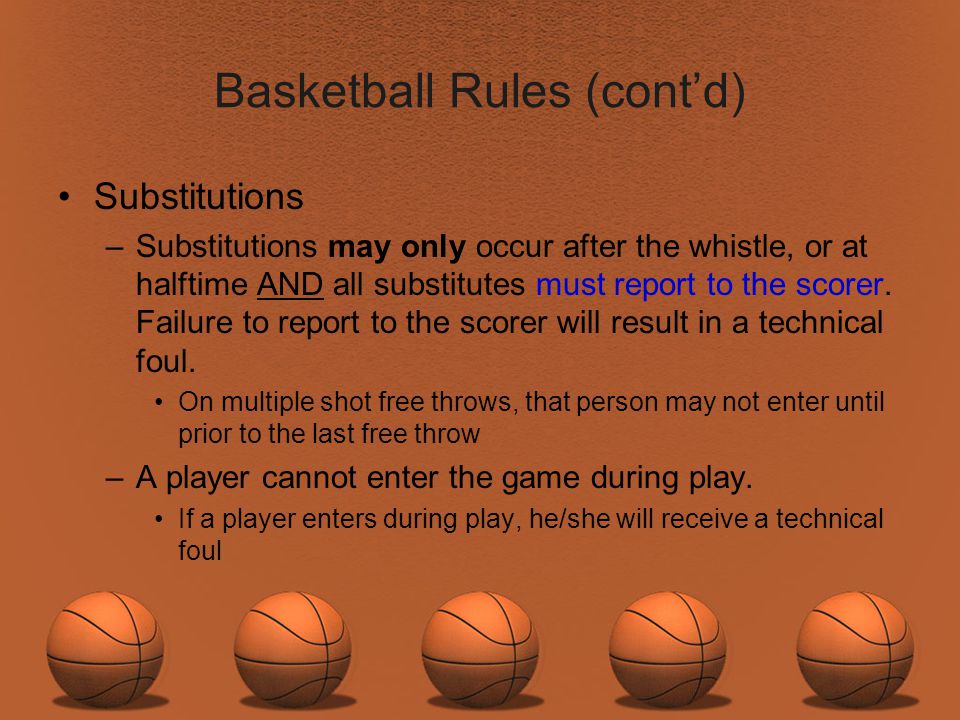
– What is a good basketball player?
– Now I'll go a little to the side. What is a good basketball player? I travel to different Russian leagues and see that in some parameters - the level of ball possession, technique, how they run, how they defend - the difference between basketball players is small. Why do some people play at a high level and others at a low level? Scientists from Kazan University tested basketball players from three basketball leagues. And they revealed a pattern - basketball players playing in the major leagues have higher IQ, intelligence.
Many people think of basketball players in a primitive way - they only need to score the ball into the basket. No, you have to put meaning into what you are doing, analyze what is happening and make decisions at high speeds - all this is good gymnastics for the head.
Until the seventh grade, I studied well, even went to the Olympiads in various disciplines. Looking back, I understand that having some kind of thought processes in my head allowed me to make the right decisions in training, in relationships, and, probably, this was my difference from more talented guys who did not get to a high level.
- There is a basketball next to you. What is this ball?
- Oh, this is a very cool ball and it will be played in the new season of the VTB United League. Do you know how it differs from the rest? The interior of the ball is made from recycled plastic bottles as part of the company's commitment to the environment. By the way, if you separate waste and recycle plastic, you can give a second life to old things. For example, plastic bottles can also be used to make uniforms for athletes. And I know another example of the company's concern for the environment, here in Anapa there is a photovoltaic solar power plant that provides electricity, including the hall where we sit.
– What other sport do you like?
- If the Russian national team plays, I watch all kinds of sports, they are all interesting. Football is more than a sport, it's interesting to look at it from the point of view of a national idea, when the whole country unites to beat, say, the Brazilians (but it doesn't work well). Hockey comes second. The kind of sport for which we are not ashamed and we have great traditions
Hockey comes second. The kind of sport for which we are not ashamed and we have great traditions
- Were there any players of small stature in your team and do their tactics differ from the game of tall ones? I'm just small myself and I'm very interested in it.
– Basketball is a very interesting sport in that different positions require different qualities, anthropometric data. Do you know how tall were the smallest players in the history of basketball? There was a 158 cm player who played in the NBA. There was a 168 cm player and they sometimes scored through real giants. Who takes what - who is tall, who is nimble or cunning. When I played for the national team, only one player was shorter than me.
– What are the elements to start learning basketball?
- As a coach, I am pleased to work with guys who are creative in the game, show leadership qualities, and are hardworking. This is the perfect combination of qualities for a player. But the task of the coach is not to divide children into skill levels, but to do each one a little better after each workout and enjoy it.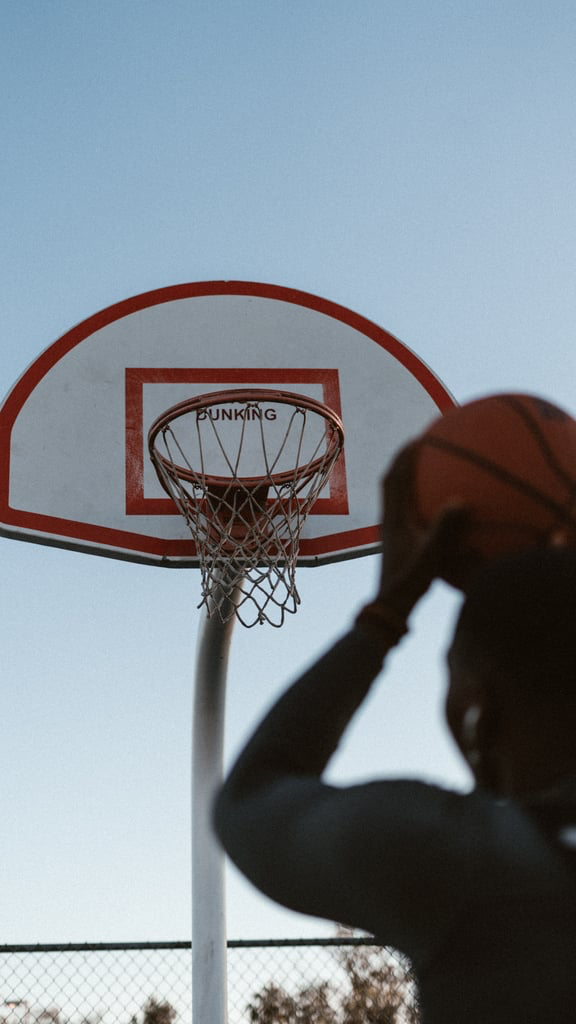
The big problem now is that coaches don't know what a basketball stance is. And this is the position that allows not only to immediately surpass your opponent, but also correctly forms the child physically. When I met her, the accuracy in the throws, the strength and sharpness of the pass, plus the defense improved literally before our eyes. Imagine what an athlete becomes by training with such knowledge from childhood.
– If you had the opportunity, what rules in basketball would you change?
– Oh, very cool and difficult question. No one has ever asked me one, so I'm a little lost. I have always perceived that rules are something to be reckoned with.
What rule changes have been in my life? The three-point zone was increased by a meter to make it harder to hit. Previously, there were 30 seconds for an attack, they made 24 for the dynamism of the game.
Repeats have now been introduced. If the referee does not understand what is happening on the site, he can watch the video. I would introduce a restriction - you can use this rule twice per match, and then only in the last five minutes, at a moment where the price of a mistake is high.
I would introduce a restriction - you can use this rule twice per match, and then only in the last five minutes, at a moment where the price of a mistake is high.
– What advice can you give to young athletes?
- You should not limit yourself to sports, I am for you to do what you like, what causes emotions and excitement.
To start doing something, emotions are always needed. To have emotions, you need meanings, meanings in your head. And to make sense? It needs a focus on something. And so a chain is formed: focus on something, fill it with meanings, then emotions appear that prompt you to do something.
That's why I don't believe when children are told: they need a lot of rest or something else. Here, for example, is my daughter with a mathematical mindset. I never force her to solve problems, but she herself enjoys solving problems. After school, she comes and sits down to decide. And he doesn’t get tired, because all the fatigue is in the head and, as a rule, from emptiness and inaction.
I would like to add that in child psychology there is no such thing as laziness. It's called lack of motivation.
– How to get into the SIBUR basketball school?
- Do you know about the basketball school? Well done. This is a project that SIBUR is doing together with the Russian Basketball Federation. First, regional stages are held in the cities where SIBUR has a presence: Voronezh, Tolyatti, Tobolsk, Nizhnevartovsk, Tomsk and others. Then three people are selected from each city and they, together with their coaches, go to the final camp. This is already a serious level, to get there, you need to train a lot. #SIBURCAMP starts at the age of 14, so most of you still have time.
– What sport would you play if not for basketball?
– There is no such scenario in my picture of the world.
I don't know where the curve would lead. But the guys in the Arkhangelsk region and I wanted to play so much that we made basketball backboards and gates ourselves.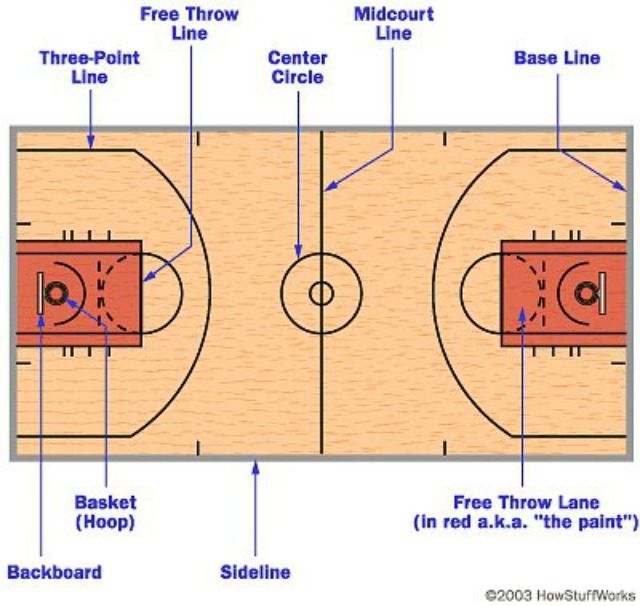 And they played in the summer all the white nights without a break. There was such a case that they started playing, then took a shower and went to school.
And they played in the summer all the white nights without a break. There was such a case that they started playing, then took a shower and went to school.
If you are a gamer by nature, then it does not matter at all what kind of sport. You will learn any rules - and by these rules you will try to become a champion.
– What do basketball, you and SIBUR have in common?
– At the beginning of 2019, I became the leader of SIBUR’s basketball development program in the regions where the company operates. SIBUR takes a systematic approach to basketball: it reconstructs sports facilities, trains coaches, and organizes camps for children, so I hope we can take basketball to a new level together.
- You have had many press conferences in your career. How do you like this one?
- All the press conferences that take place after the match are very banal. “How did you beat them? What did you lack to beat them? Who was better today? How do you like refereeing? It's not interesting at all.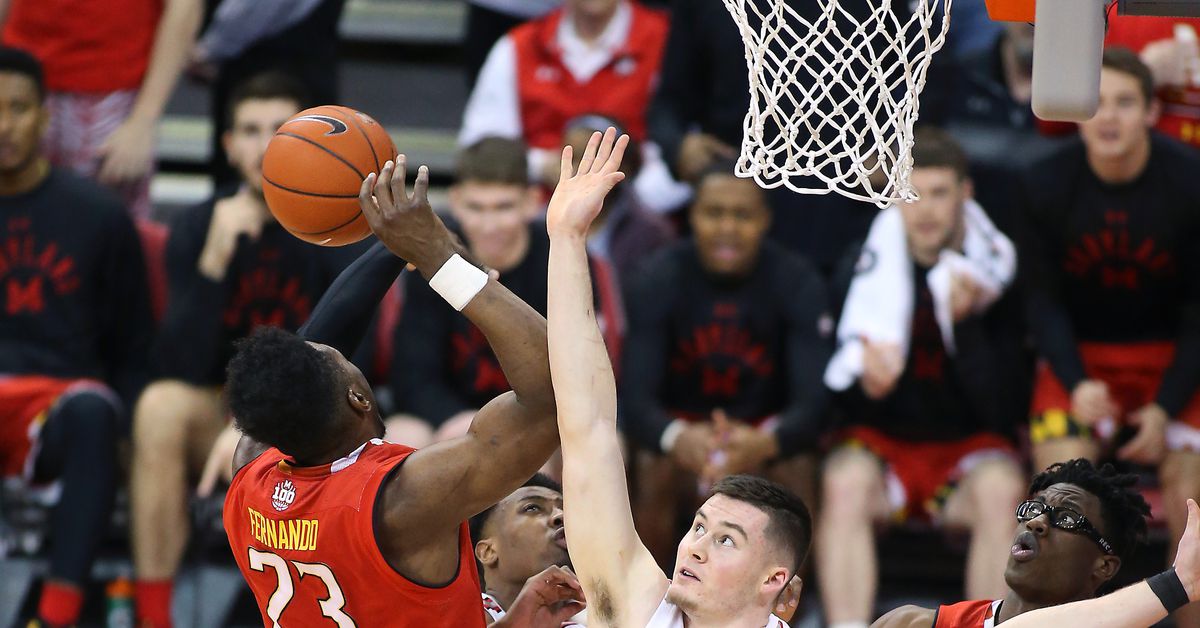 And you had bold questions. I hope that in the future one of you will replace Pozner or Dud.
And you had bold questions. I hope that in the future one of you will replace Pozner or Dud.
Press news
Rodriguez spoke about the reasons for the transfer to AC Milan Tyler Ennis to pass medical to join Maccabi FOX Tel Aviv Timofey Mozgov is the perfect Russian in the NBA. But even he did not change our consumer attitude to sports. James Michael McAdoo to continue career at Besiktas Basketball surname.

Interview with Sergey Karasev La Gazzetta dello Sport: Virtus will play in the Euroleague 2020/21 season NBA champion Timofey Mozgov returned to Khimki Valiev: even if Mozgov goes to the World Cup, we must be ready to play without him Basketball player Mozgov signed a contract with Khimki Agent Mozgov: In addition to Khimki, two Russian clubs showed interest in Timofey .

..
Latest club news
GAME DAY. Khimki - Barnaul 19:00 Happy birthday, Oleg Vladimirovich! Khimki is ready to start the season in the Superleague Happy birthday, Sergey Nikolaevich! Friendly match.
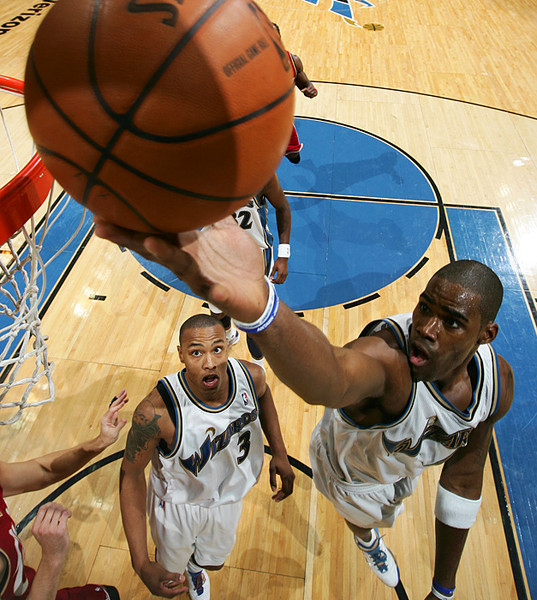
Khimki - University-Ugra - 102-78 Friendly match. Khimki - University-Ugra - 74-81 BC Khimki held a seminar for children's coaches Young basketball players from the DPR visited BC Khimki Tournament in memory of Alexander Petrenko.
